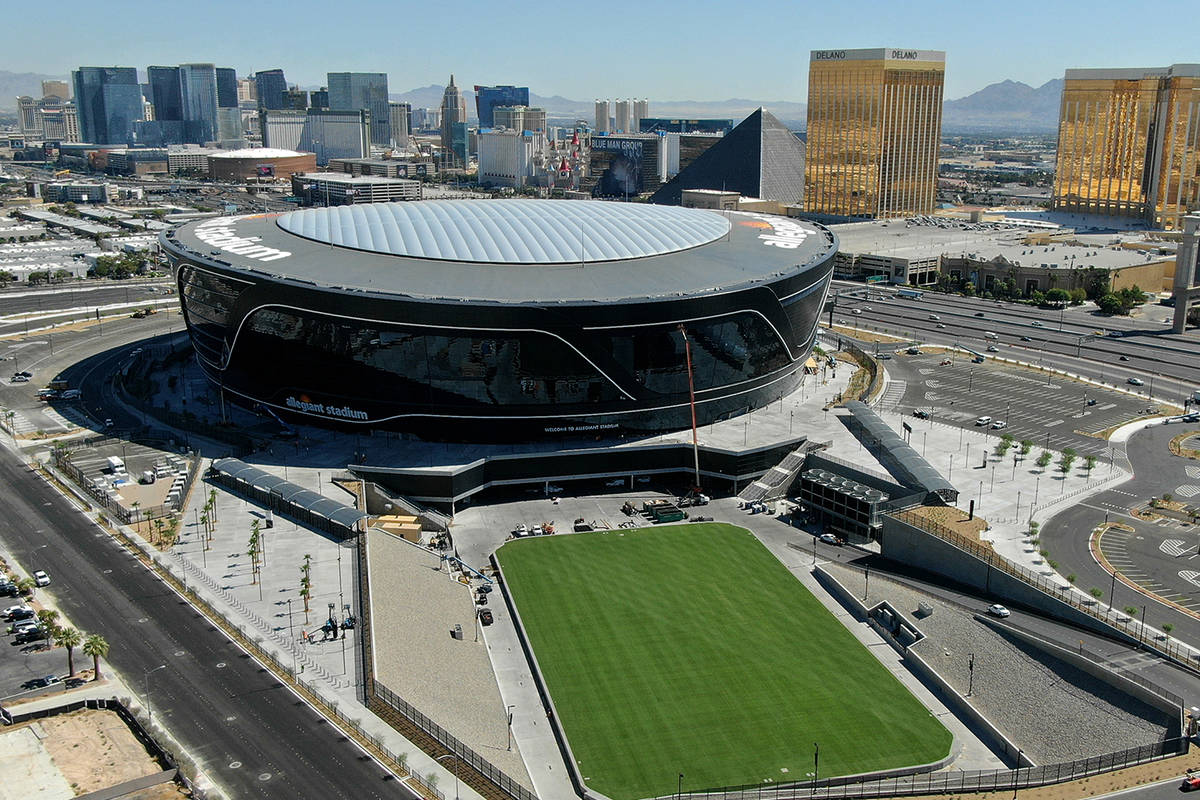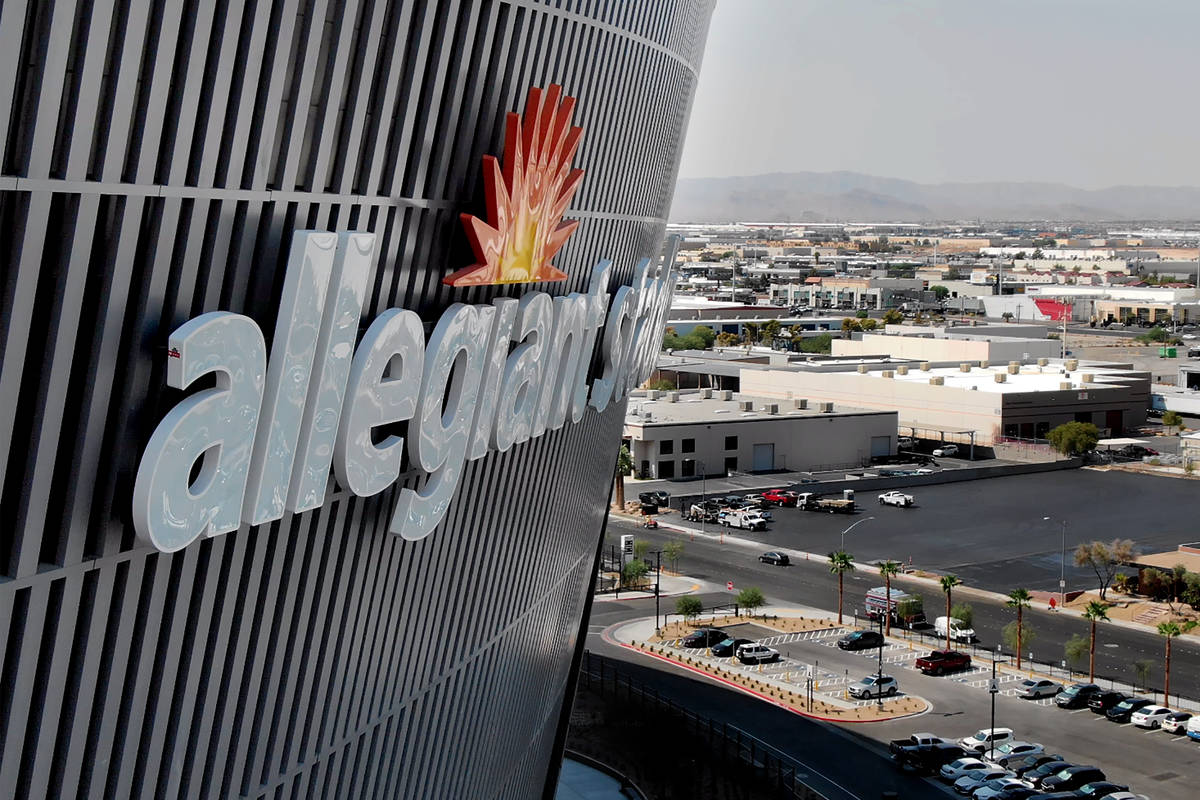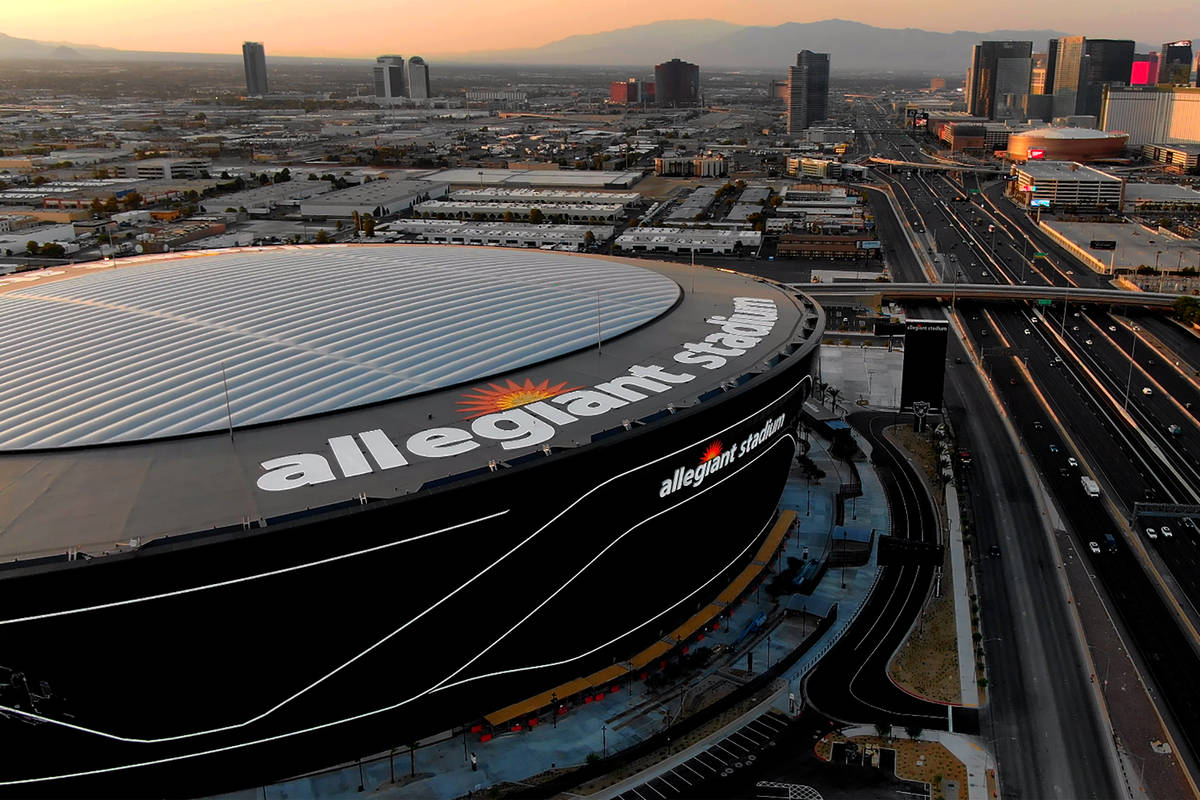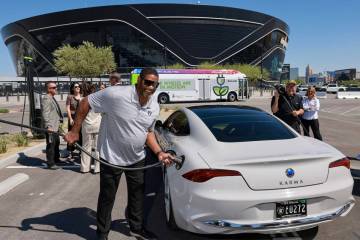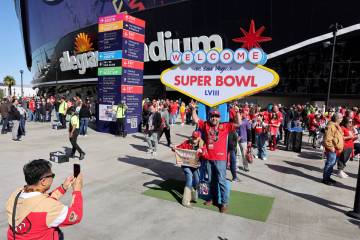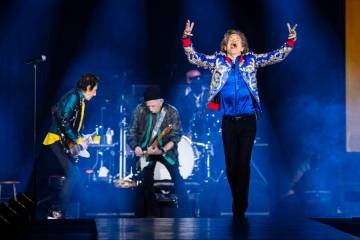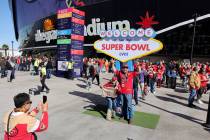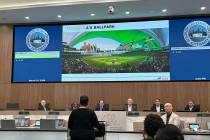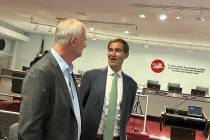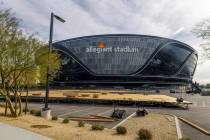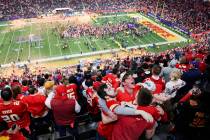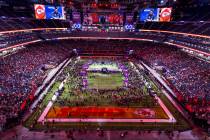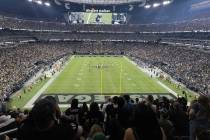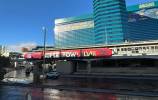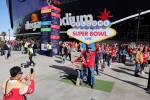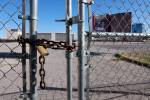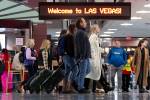Plans call for walkable entertainment district around Allegiant Stadium
It’s becoming clearer what the area surrounding Allegiant Stadium could look like in the future.
As it stands now, the 1¼-square-mile area around the stadium mainly includes industrial businesses. But plans presented Wednesday to Clark County commissioners call for transforming the neighborhood into an entertainment district of sorts, featuring retail, bars, restaurants and other entertainment establishments.
An entertainment district would hopefully attract people even when the stadium isn’t hosting an event, Greg Cerven, senior planner of the Clark County Department of Comprehensive Planning, told commissioners.
Plans call for changing the layout of roads in the area to create a more walkable district, Cerven said. Streets would be broken up into smaller blocks, with public spaces and art to create a more pedestrian-friendly area. Enhanced lighting and wider sidewalks are also needed for pedestrian use.
He also noted the desire to add “complete streets” that include bike lanes, dedicated bus lanes, wider sidewalks, accessible enhanced public transportation stops, more narrow travel lanes, median islands and frequent pedestrian crossings.
Additionally, plans call for any new buildings in the area to be along the street, with parking pushed behind them, to create a more lively area, with people and activity from restaurants and bars occurring streetside.
The plan is an outgrowth of several public meetings and surveys conducted to see how stakeholders and residents envision the area developing around the $2 billion facility.
“We learned that people wanted the district to be a mixed-use community,” Cerven said. “They want it to be a safe environment with amenities, such as entertainment or restaurant uses. They wanted the district to be family friendly, a place they’re comfortable to bring their children to.”
The stadium district plan is intended to identify the preferred uses for the area, offer solutions that could help guide the implementation of the plan and help determine investment opportunities, Cerven said during his presentation.
Transportation options
Projections call for 24,000 fans walking to the stadium — mainly from the Strip — on large event days. Another 12,627 people are expected to drive to a nearby parking lot and walk the rest of the way to the stadium; 11,343 would take a ride- hailing service or taxicab to the area; about 7,000 fans would park at the stadium; and around 6,000 people would park remotely and shuttle in.
The remaining fans are projected to take a shuttle from a hotel property, a limousine or utilize Regional Transportation Commission options.
Plans call for including traditional travel modes such as RTC buses and bike lanes and innovative options such as the Boring Co.’s underground transportation system known as the Vegas Loop.
A map included in Cerven’s presentation includes sites of possible Vegas Loop stations. One is shown at the stadium near the parking lot on the southwest corner of Russell Road and Polaris Avenue.
Five other proposed station locations are nearby, including one near the corner of Tropicana Avenue and Valley View and four along the Strip from Luxor to Mandalay Bay.
Another map notes a proposed bus rapid transit line along Tropicana and a high-capacity transit line proposed for Flamingo, near the resort corridor.
Ride-hailing and taxi pickup/drop-off areas would be on the corner of Polaris Avenue and Ali Baba Lane and along Procyon Street between Diablo Road and Hacienda Avenue.
Timeline unclear
However the district shapes up, it won’t happen overnight. The plan is just a blueprint for what would work in the area.
Several buildings in the stadium district have signs out front advertising they are either for sale or lease, suggesting that some business owners are ready to entertain offers.
Cerven said officials won’t force any business out of the area. He expects the area to develop naturally as property values rise and interested parties look to build in the area.
“It’s going to be a slow transition period as things start to develop. Hopefully it will start to snowball as people try to come in and develop the area,” Cerven said. “We have to start somewhere.”
That start could come with the help of public money, as Commissioner Jim Gibson suggested.
“One of the questions I’ve had since we’ve thought about this is whether or not there are some areas that are in a condition where something could be done today.” Gibson said. “To actually put (some of this) into the ground … including possibly even some public money to kind of begin things.”
Cerven said there are opportunities with things as simple as restriping roads to include bike lanes or enhance pedestrian elements.
Gibson said those improvements should be looked at soon to get the ball rolling.
“Seems to me that we ought to be willing to step up and do some of this development,” Gibson said. “We don’t have to do massive expenditures, but I think that it makes sense for us to begin this work.”
Commissioner Michael Naft, whose district includes the stadium, said that definitely can be done.
“We are going to lead by example on this project,” he said. “Where there are opportunities, especially where it’s simple and doesn’t require a whole lot of cost … we’re ready to schedule and get out there and start doing it. Then hopefully inspire some of the private stakeholders in the area to follow that example and really turn this into a stadium district that makes all of us proud and is something that our locals and visitors alike will enjoy.”
Contact Mick Akers at makers@reviewjournal.com or 702-387-2920. Follow @mickakers on Twitter.



